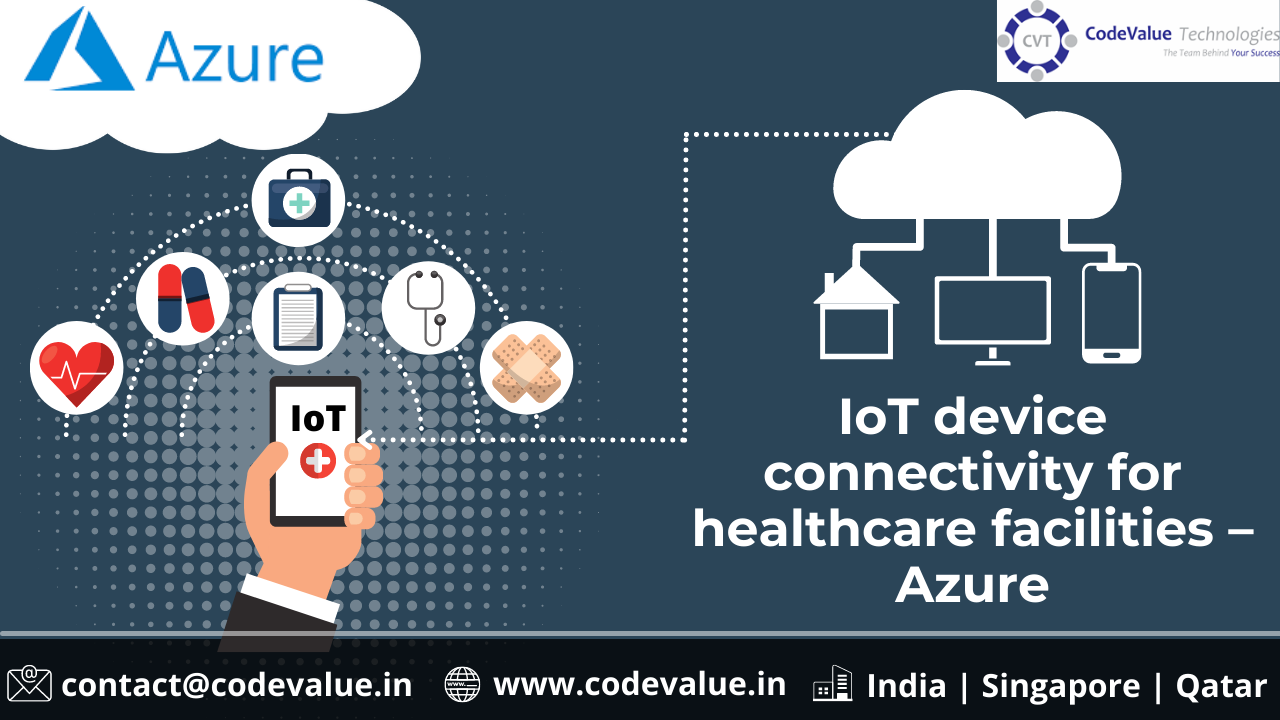Azure IoT solution describes how buildings and campuses can securely, reliably, and scalable connect their on-premises Internet of Things (IoT) devices to the cloud. Cloud services can store and analyse the IoT data to diagnose anomalies and take corrective or preventive actions.
In this solution, a healthcare facility uses LTE or 5G-enabled IoT devices to track both patient health and building performance. The devices use built-in Azure Sphere certified chips to stream data to on-premises edge servers, which communicate with the Azure cloud. On-premises network administrators can view network health through the packet cores on the edge servers.
Azure cloud services can further analyse and store the data, and use machine learning to optimize building settings.
Potential use cases
- Predictive maintenance for machines in a coffeehouse.
- Safety and compliance monitoring for perishable food and drink temperatures in a food manufacturing plant.
- Detecting the optimal point for resource extraction in the energy sector, based on data collected by autonomous exploration vehicles.
Architecture

- Hospital buildings use various connected devices to monitor both patient health and facility performance.
- Health-tracking devices include patient monitors, CT scanners, and blood pressure monitors.
- Building safety and quality devices include air quality and building temperature sensors.
- The patient health and building monitoring devices send data to LTE or 5G Radio Access Network (RAN) devices.
- The 5G or LTE radios in the hospitals forward the data to the 5G or LTE packet cores running on the edge servers. The edge servers can be Azure Stack Edge or any Azure Arc-enabled servers.
- On the edge servers, the IoT Edge runtime can pre-process data before sending it to Azure for further analysis.
- In the cloud, Azure IoT Hub ingests data quickly and securely, and sends it to Azure Machine Learning.
- Azure Machine Learning incorporates the new data to further optimize the model that controls the smart building settings.
- Data from Azure IoT Hub also feeds into Azure Digital Twins, which provides a map of the hospitals’ networked IoT devices as a virtual simulation.
- Data also feeds into Azure Time Series Insights, which can analyze patient health over a period of time, or treatment efficacy over several hospitals. Time Series Insights also offers a visualization layer to aid in decision-making.
- All the data is stored in Azure Data Lake Storage, which can store data of any format and size.
Learn More:
CVT’s technology solutions enable effective solutions and speedy digital transformation by utilizing cutting-edge information technologies to IoT device connectivity for healthcare facilities – Azure, as well as our in-depth knowledge of markets and technological innovation. As a result, we have become an invaluable business partner.
For expert advice on Azure contact us at contact@codevalue.in and follow us @codevaluetechnologies

